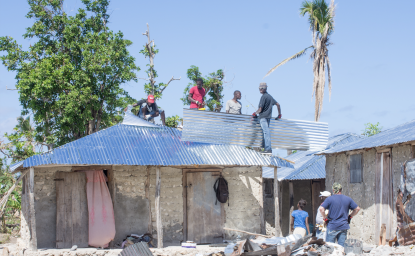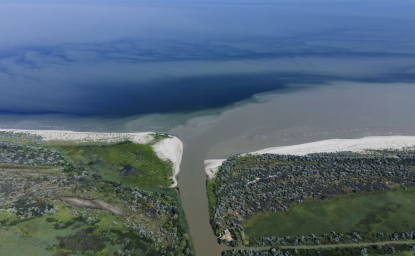ECSP Releases 12th Annual Report
JUNE 2007—Authors Explore Environment, Conflict, and Cooperation in Africa, Fragile States; Find Opportunities for Peace
JUNE 2007—Authors Explore Environment, Conflict, and Cooperation in Africa, Fragile States; Find Opportunities for Peace
Most security experts focus on large-scale, organized violence, but Environmental Change and Security Program (ECSP) Director Geoff Dabelko argues that we should not miss the quieter—yet often more lethal—conflicts. In the latest ECSP Report, he points out that while Ethiopian troops fighting the Islamic Courts in Somalia grab our attention, the Horn of Africa is beset by local conflicts for shrinking resources, which are increasingly depleted by population growth, environmental degradation, poverty, and over-consumption.
Such local conflicts may have larger "neighborhood" effects, contributing to wars and humanitarian disasters, as in Sudan's Darfur region. In addition, the lack of sustainable livelihoods produces plenty of casualties without even a single shot. But efforts to promote sustainability—and use natural resources as peacebuilding tools—could help turn deadly environments into safe, sustainable neighborhoods.
In a special Report From Africa, eight African leaders and scholars describe their continent's struggle with conflict over resources—and the possibilities for peace that population and environment initiatives may hold:
In the article "Environmental Peacemaking," Alexander Carius asks: What are the conditions for a successful environmental peacemaking initiative? We know relatively little about how environmental cooperation could contribute to peacebuilding, he argues. Based on his analysis of cases in southern Africa, the Middle East, Latin America, and Central Asia, he pinpoints lessons learned, as well as shortcomings, and highlights areas for action and recommendations for development agencies. "To move forward, we need systematic assessments and a constructive dialogue with poliycmakers to make environmental peacemaking projects more effective."
In a graphic illustration of the links between population and conflict, Richard Cincotta and Elizabeth Leahy chart what they dub the "60-percent-under-30" benchmark: about 86 percent of all countries that experienced a new outbreak of civil conflict had age structures with 60 percent or more of the population younger than 30 years of age. They conclude that this benchmark could "serve as a means to identify and track a state's demographic risks of civil conflict." Policymakers could thus reduce future risks "by supporting programs and policies that promote advancement along the path of the demographic transition in countries with young age structures."
Young age structures were also the focus of a meeting series on population, health, and fragility convened by ECSP for the U.S. Agency for International Development. Jack Goldstone urged Western development professionals to help countries achieve their "security demographic." Speakers from RAND revealed the results of their study of post-conflict reconstruction in seven countries, arguing that nation-building cannot succeed without at least partial success in building public health. But this success requires investment: Reviewing best practices, Ronald Waldman noted that unless funding levels are increased, health systems will not help stabilize fragile environments. Speaking of recent programs in Afghanistan, Sallie Craig Huber observed that progress made in the health sector will help foster stability and strengthen the relationship between Afghanis and their government: "They'll feel that the government is working for them and that they have hope for their future and their children's future." Frederick "Skip" Burkle, the final speaker in the series, drew on his decades of experience in public health in fragile states to call for better ways to measure the true human cost of war, so that the lives lost through indirect causes will not "remain unseen, uncounted, and unnoticed."
As always, the ECSP Report includes reviews of recent publications on population, environment, and security; as well as a dotPop section, which this year gathers recent reports and data sources on the world's water crisis. Formerly a monthly feature in our e-newsletter ECSP News, dotPop now appears in our new blog, The New Security Beat, where you will also find frequently updated links to the latest news and reports on environmental security.

The Environmental Change and Security Program (ECSP) explores the connections between environmental change, health, and population dynamics and their links to conflict, human insecurity, and foreign policy. Read more



